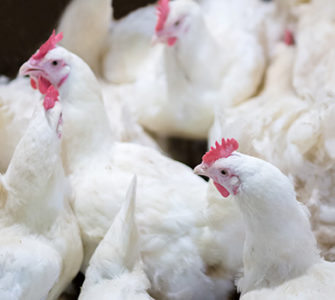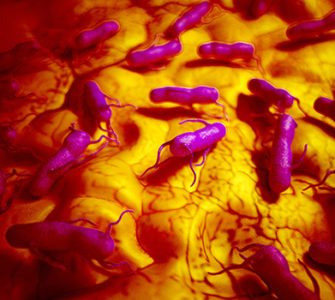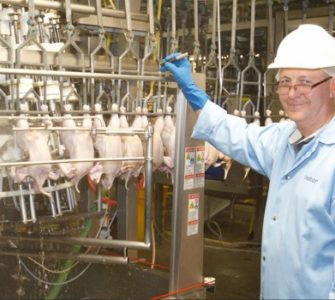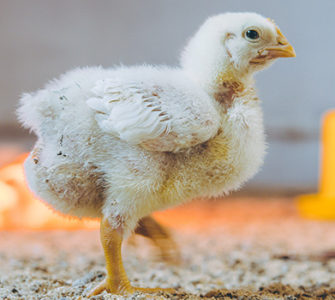Testing mixed control approaches important in controlling Salmonella in broilers
Commercial broiler farms often employ a multi-faceted approach in tackling Salmonella, but testing different combinations of control options together on a small scale before they are rolled out across entire production facilities is a valuable method of ensuring successful disease control, according to Phil Stayer, DVM, corporate veterinarian at Sanderson Farms.
Producers tend to use a combination of commercial vaccines, direct-fed microbials (DFMs) and autogenous vaccines customized to Salmonella strains found locally. Stayer and his team measured the impact a mixed approach had on efficacy, based on observations made on-site.
“You try to do everything you can to control the human-borne and food-borne pathogens. You go through the USDA list – that includes DFMs and vaccines. It’s up to the user then, and also the supplier, to make sure if you’re doing multiple interventions they don’t interact or interfere with one another,” Stayer said.
Different microbials, different effects
Stayer decided to investigate what was going on in Sanderson flocks by first looking at co-application of DFMs and commercial vaccines.
“We thought that the DFMs may interfere with a live Salmonella vaccine. So, we tested that out,” he said. “We fed the birds DFMs in the feed and then crop inoculated them with the vaccine to make sure they had vaccine uptake.”
Stayer found that not all DFMs interfere with live Salmonella vaccines, but some do.
“The DFMs that are living vegetative forms, not spore-formers, those tend to have more direct effect on the vaccines,” he explained. “With the spore-forming DFMs, we have not seen the same direct effect.”
Commercial vaccines provide added benefit
Investigations then moved on to exploring the effects of dual vaccination with autogenous and commercial vaccines.
“For well over a decade, we’ve been using autogenous Salmonella vaccines. We figured we could customize those vaccines with the serotypes that were in the processing plant,” Stayer said.
“The question was, would commercial Salmonella enterica vaccines be beneficial on top of the autogenous vaccine? So, we tried to do that, and the short answer is yes.
“At least serologically, the birds respond better on an antibody test kit if you have commercial vaccine in addition to an autogenous vaccine. There’s some reaction from the autogenous vaccine, but a better reaction, at least immunologically, from the commercial killed vaccine.”
Independent validation can be useful
The approval process for commercial vaccines means a flexible approach is important, Stayer said, as the serotypes you need to target immediately may not be on the label. The recent prevalence of Salmonella infantis is a case in point, he added.
“Very few of the products have infantis on the label – so what are you going to do about that? Well, there’s autogenous. There’s that challenge of trying to be flexible and adjust and also do something that actually works,” he said.
While there are range of USDA-approved methods of Salmonella management, selecting a successful package of measures isn’t so straightforward – and this is where testing options out for a specific farm can make a difference, suggested Stayer.
“I guess the take-home message for me is look at the research, listen to the government, but then you’ve got to do your own studies and your own validation of different interventions,” he added.
Posted on April 26, 2021

















